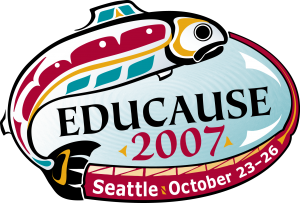Reflections on CIOship, Part III
This is the third and final of my ruminations on this topic. Some years ago, about halfway through my UChicago CIOship, I wrote this:
…it is bad news when a dean at my university not only knows who I am and what I do, but doesn’t like it. Suppose the dean wants to buy nonstandard equipment through a nonstandard channel. On the university’s behalf, I object to those choices; I also believe that the entire purchase is unnecessary because the equipment would allow the dean’s school to duplicate existing services that the university provides centrally. The dean responds by arguing that the interests of individual schools should outweigh collective university interests, and that having a chief information officer — that’s me — serves no useful purpose. To the dean, my job seems to consist entirely of interfering in school affairs.
 I quoted this passage from “A CIO’s Question: Will You Still Need Me When I’m 64?, a 2002 opinion piece in the Chronicle, in an EDUCAUSE presentation because it had gotten me in trouble. Although it was based on a particular dean in one institution, a different dean at a different institution thought it was about him, and wasn’t happy. The lesson I drew from that — that specificity is sometimes better than generality, and that readers identify with abstracted characters — remains important.
I quoted this passage from “A CIO’s Question: Will You Still Need Me When I’m 64?, a 2002 opinion piece in the Chronicle, in an EDUCAUSE presentation because it had gotten me in trouble. Although it was based on a particular dean in one institution, a different dean at a different institution thought it was about him, and wasn’t happy. The lesson I drew from that — that specificity is sometimes better than generality, and that readers identify with abstracted characters — remains important.
But that’s not my theme today. Rather, I want to revisit the arguments I made in “A CIO’s Question…”, and see how their validity has evolved. My core argument was that it remains important for colleges and universities to have a Chief Information Officer or CIO. By “CIO” I meant not necessarily someone with that exact title, but rather someone providing central, comprehensive leadership for the institution’s information-technology activities and policies.
Technologies have a lifecycle. Initial implementation often requires central initiative and guidance. In due course, however, many technologies mature sufficiently to no longer require central oversight. For example, “most colleges and universities now have pervasive networks,” I wrote, “accessible to everyone everywhere. Users interact directly with administrative and academic systems. E-mail, instant messaging, and cellphones are everyday tools. Information technology is a utility like electric power, available consistently and pervasively across most of higher education” — and therefore requiring crisp operational management rather than high-level leadership. I cited other examples of areas no longer requiring central attention: the promotion of instructional technologies, and the support of local computer users (more on that in my recent post “Help! I need somebody.“)
Yet there remain at least four good, interlinked reasons for colleges and universities to have CIOs, I wrote: properly integrating central systems, securing economies of scale in operations and procurement, promulgating and accepting standards to enable those first two, and advocating for strategic applications of IT across the institution’s academic and administrative domains.
These seem valid justifications for the CIO role today. Yet one hears challenges to traditional CIOship: distributing responsibility for IT across diverse separate entities, downgrading the role and importance of the CIO, and managing what remains of central IT as merely one utility among many.
It’s important to parse these trends carefully. What appears to be coherent movement in the wrong direction may actually be discrete movement in several right directions. Moreover, although it remains important that there be central leadership for institutional IT, it may no longer be important — or even feasible — that there be central control. (More on the demise of control in an upcoming post.)
As technologies mature, they enable decentralization. As the strategic importance of IT increases, it becomes dangerous for an institution to entrust it to a single individual, especially if that individual speaks the language of technology rather than the language of higher education, or if that individual is organizationally and geographically isolated. And a large fraction of IT is indeed a critical utility, one whose failure can jeopardize the institution, and so much of IT must be managed as such.
What appears to be the downgrading of IT may instead be an evolving recognition — however imperfect — of its increasing importance. Then again, it may be the downgrading of IT, or the political dilution of a CIO’s perceived power. We need to understand which is which: to think about the evolving CIO role thoughtfully rather than simplistically, rather than focus on its scope of authority, its precise location in organization charts, or its title and reporting line.
The challenge for a CIO is to ensure that his or her institution uses IT to its maximum long-term benefit. To achieve that, it’s important to hold onto what’s important in one’s particular institutional and technological context, while letting go of what isn’t.
This post, in somewhat modified and expanded form, appears as “Shrinking CIO?” in EDUCAUSE Review, vol. 46, no. 1 (January/February 2011)



